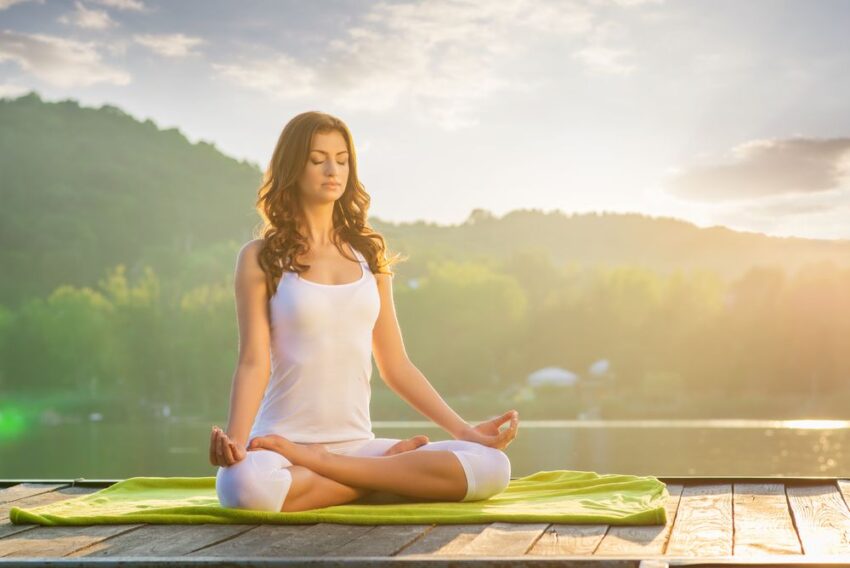The writer of this article is a yoga enthusiast, but having only just recently discovered yoga, is essentially a novice. Writing as a non-expert, these 3 top tips are for other beginners of yoga and for those considering practicing yoga for the first time. There is, of course, a plethora of information available online from more qualified and experienced yoga practitioners. If you search yoga online you will find a great number of online yoga tutorials in different languages, online stores selling yoga equipment, websites offering yoga classes and even yoga vacations and retreats in different countries around the world. But if you are looking for a quick summary of yoga top tips from one beginner to another, please read on.
Yoga involves stretching muscles, breathing and meditation. It can help with posture, flexibility and strength and can help with releasing tension and stress. Whether you plan to attend a beginners’ yoga class or are planning to start yoga in the comfort of your own home, below are three top tips you might like to consider to get the most benefit out of any yoga session.

Wear comfortable, stretchy clothing
It is important to feel comfortable when doing yoga as you need to be able to focus and relax. You need to be able to move freely and not feel too warm or too cold. Make sure that you are wearing comfortable clothing that isn’t going to restrict your movement and stretching. Leggings generally allow freedom of movement and are non-restrictive. Moreover, particularly if you plan to go to a class, you may be worried about exposing your tummy; you may want to wear a loose-fitting top that doesn’t rise when stretching. Alternatively, you might choose a stretchy top that gives you support but that doesn’t restrict your movement. Furthermore, you usually remove shoes and socks for yoga. However, if you don’t like your feet being exposed or getting cold, you might like to consider wearing non-slip socks.
Have the basic props
You are likely to need a mat if you are planning to attend a yoga class, in which case you might want to choose one that is easily portable and rolls up and is light to carry. A non-slip mat is a very good idea. Another accessory or prop worth considering as a beginner is a yoga bolster, which is basically a cylinder cushion for putting under your neck or back for comfort and support. Another useful piece of equipment is a block, useful for seated poses as it raises the hips above the knees. The yoga brick is similar to a block, only slightly thicker, and is useful for extending the arm when your hands can’t reach the floor. Furthermore, a blanket is a useful accessory, perfect for helping to keep your warm and relaxed if needed.

Follow any precautionary advice
Keep in mind that you won’t be able to do everything to start with and will need to build up to certain poses. Listen and talk to your class instructor – you don’t want any injuries. Take things slowly and carefully, particularly if you are doing yoga at home. Watch and read information online and follow any precautionary advice. There are lots of information websites, blogs and tutorials.
Once you get into yoga, you will want to incorporate it into your daily life and you might also even consider a yoga vacation. For those offering online information about yoga, including yoga vacations and retreats, please makes sure that everyone can access your information. You could reach a much wider audience simply by translating key information on your website. Linguation.com is an online translation agency providing affordable translation however long or short your text. Linguation.com can translate your website and also any reviews about your yoga retreats. People are now looking to combine vacations with yoga and are looking for information about instructors, classes and also the retreat accommodation, facilities, meals and other activities offered and prefer to read this in their native tongue. Linguation.com will assign a translator with the relevant understanding of yoga and tourism website translation to your text.

